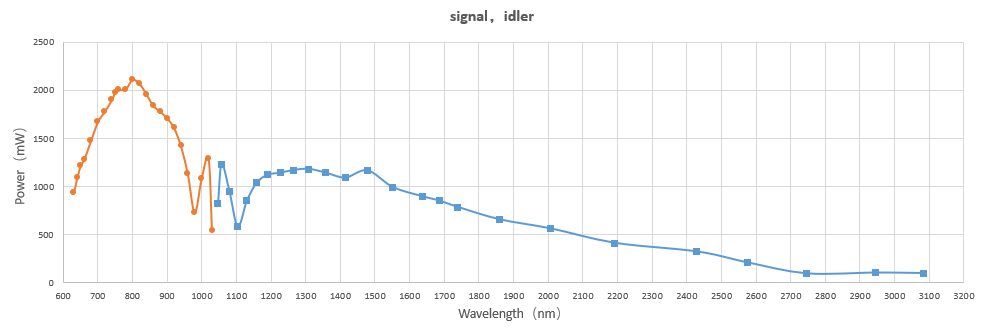Transient Absorption Spectroscopy (TA) is a time-resolved spectroscopic technique based on ultrashort pulsed lasers, used to study the dynamic changes of materials on extremely short timescales. By monitoring the absorption spectral differences between the excited state and the ground state, TA technology can accurately capture the transient processes that occur during the interaction of light with matter, providing an important tool for in-depth exploration of photophysical and photochemical processes.
The Principle of TA Technology
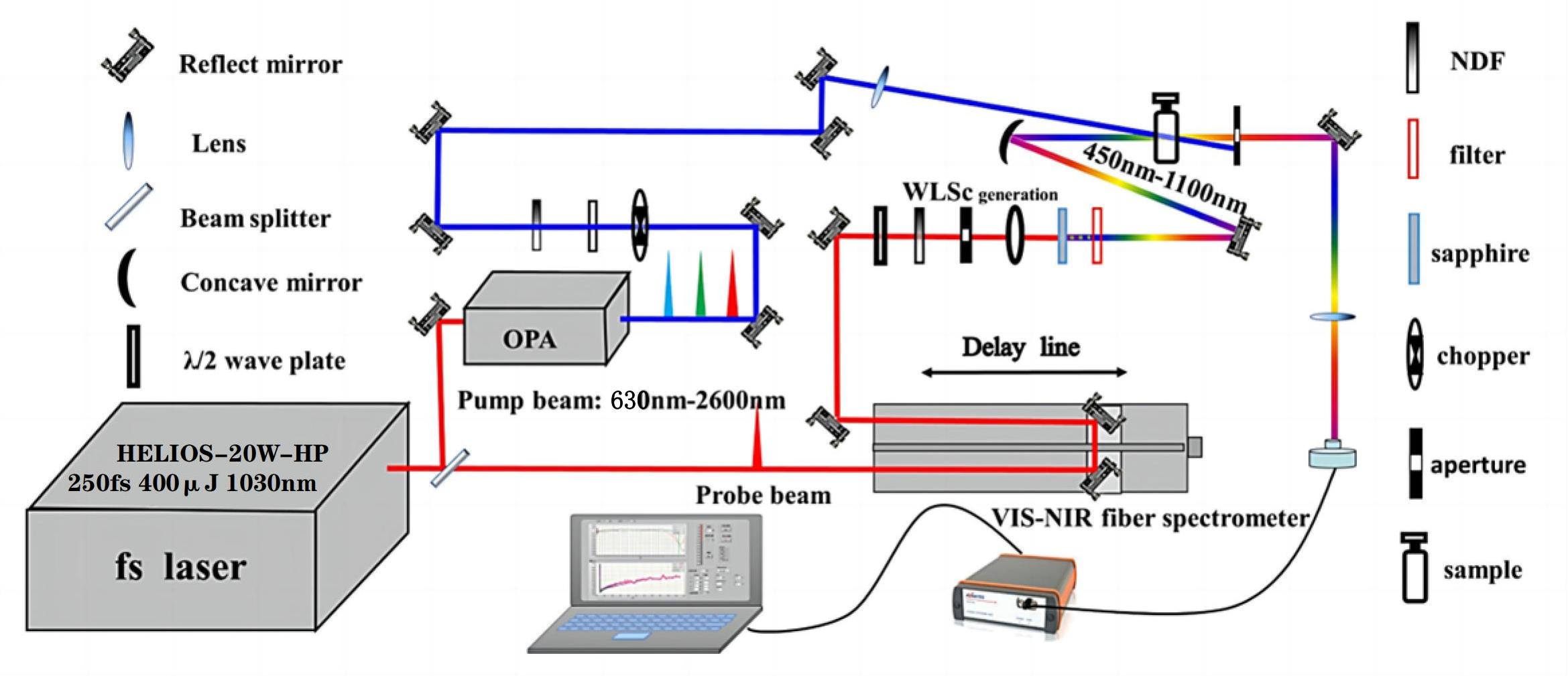
Photoexcitation process
The core of the TA system lies in using ultrashort pulsed lasers as the pump light to excite the sample from the ground state to a high-energy state. The timescale of ultrashort pulses is typically in the femtosecond (10⁻¹⁵ seconds) range, allowing for the instantaneous triggering of dynamic processes in materials and creating non-equilibrium particle distributions. For example, using a titanium sapphire femtosecond laser (760 nm - 840 nm), with its wide wavelength tunability and high energy output, can meet the excitation needs of different samples, enabling precise targeting of specific molecular chemical bonds. However, for a broader wavelength range and greater tuning flexibility, a parametric amplifier (OPA) is required.
In the optical diagram, the pump light is provided by an ultrafast laser (such as the HELIOS-20W-HP femtosecond laser shown in the figure), which outputs femtosecond laser pulses with a wavelength of 1030 nm and a pulse width of 250 fs.
· The laser is split into two beams by a beam splitter, with one beam entering the optical parametric amplifier (OPA) to generate tunable pump light in the wavelength range of 630 nm to 2600 nm. This portion of the pump light is used to excite the sample.
· A λ/2 wave plate is used to adjust the polarization direction of the pump light, ensuring optimal interaction between the light and the sample.
The Signal Detection Process of the Sample
The probe light is generated by a broadband supercontinuum spectrum (WLS) generator, which is produced from a portion of the laser separated out. After the sample is excited, the broadband probe light, following the pump light, passes through the sample. At this point, due to the change in the absorption characteristics of the sample's excited state towards the probe light, the system records the transient absorption spectral signal generated. These signals act as a "snapshot" of the light-matter interaction, providing a clear perspective for understanding dynamic changes.
· In the figure, the WLS generator contains nonlinear optical components such as sapphire crystals, which generate broadband probe light in the range of 450 nm to 1100 nm through the nonlinear interaction between the pulsed laser and sapphire.
The time synchronization of the pump and probe light is achieved using a key component called the delay line, which precisely controls the time difference between the arrival of the pump and probe light at the sample. The high-precision optical delay line adjusts the time delay by changing the optical path through the adjustment of the time interval between the pump and probe light, ranging from the picosecond scale to the millisecond scale. This allows the system to continuously record spectral changes at different moments, thereby depicting the evolution of the sample throughout the entire dynamic process.
The pump light irradiates the sample, exciting the sample molecules from the ground state to the excited state, while the probe light follows closely and passes through the sample.
· In the sample region, the excited state of the sample generates a different absorption response to the probe light, causing changes in the spectral characteristics of the probe light.
Signal collection and data analysis logic
After passing through the sample, the probe light enters a VIS-NIR spectrometer connected by optical fibers. The spectrometer records the spectral changes of the probe light at different time delays and transmits the data to a computer for further analysis.
TA data analysis is based on the Beer-Lambert law. After processing the collected data, transient absorption spectra evolving over time can be obtained, allowing for further analysis of the sample's dynamic parameters. By analyzing the amplitude variations of the absorption signals, the concentration, lifetime, and other dynamic parameters of the excited-state species can be derived. In complex systems, scientists can use spectral fitting and dynamic models to distinguish the specific chemical processes behind overlapping signals and identify key reaction pathways, such as parallel or sequential reactions.
Transient Absorption Spectroscopy (TA) offers ultra-high time resolution across a wide timescale from picoseconds to milliseconds, enabling precise capture of transient changes in photophysical and photochemical processes, such as the separation and recombination of electron-hole pairs. Additionally, TA technology not only records changes in absorption intensity but also analyzes complex spectral information such as shifts in absorption peak positions and peak broadening, providing comprehensive data to study the dynamic properties of materials in their excited states. Furthermore, TA employs a non-contact interaction between light and the sample, ensuring a gentle, non-destructive process, making it especially suitable for dynamic studies of precious samples and biological tissues. With these unique advantages, TA has become an essential tool for exploring ultrafast dynamic processes and light-matter interactions in scientific research.
YbRay Femtosecond successfully delivered a tunable femtosecond laser system for the TA system
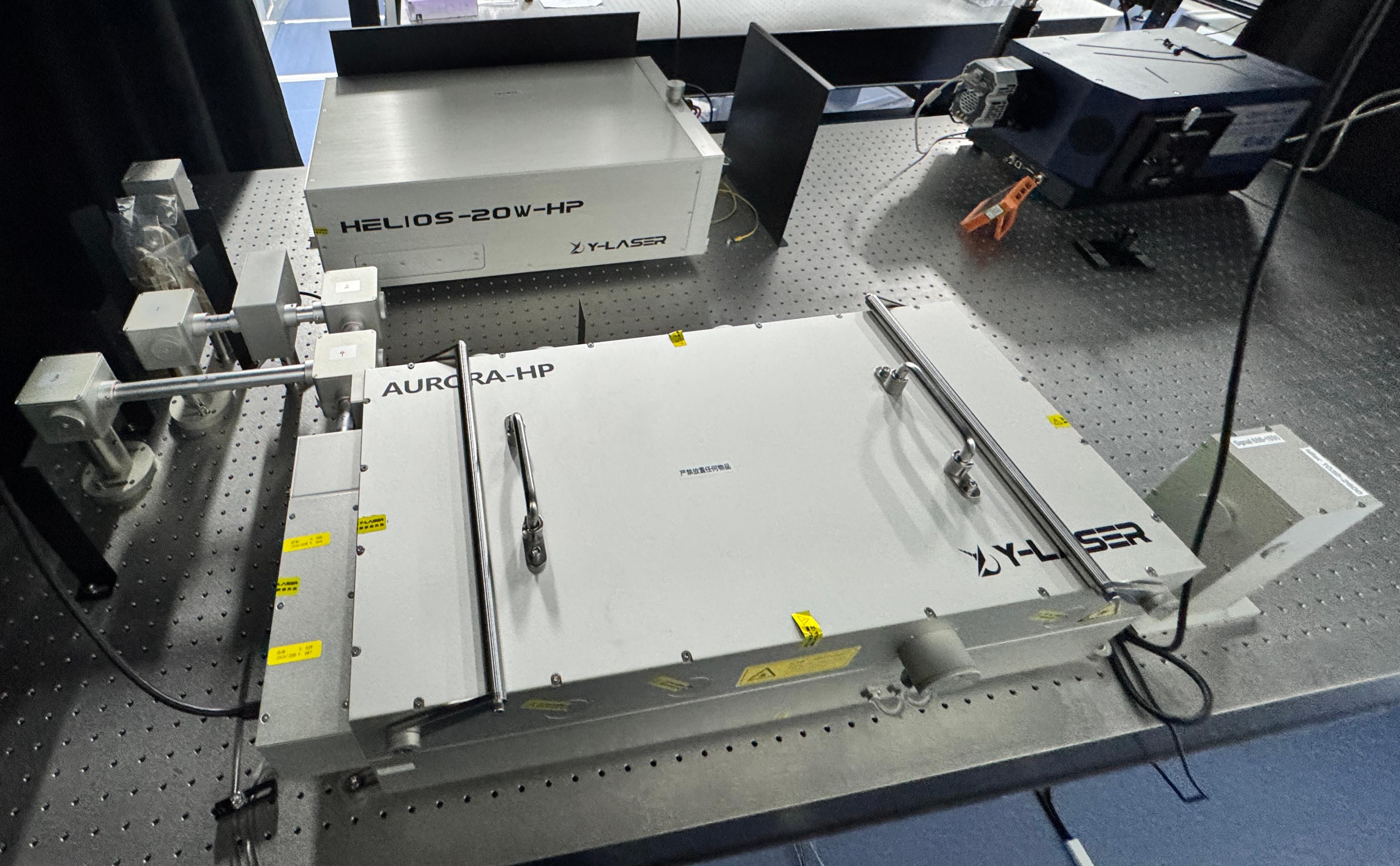
The delivery includes the HELIOS + AURORA tunable femtosecond laser system for TA.
The core of Transient Absorption Spectroscopy (TA) lies in the selection and performance of the light source, which directly determines the experimental time resolution, spectral range, and data quality. A TA system typically includes a pump laser and a broadband probe light source, with each component carefully designed and optimized to meet high-performance requirements.
As shown in the optical diagram, the HELIOS-20W-HP femtosecond laser provides the initial femtosecond laser pulse with an output wavelength of 1030 nm and a pulse width of 250 fs. In the diagram, the broadband probe light source is generated by splitting the output of the HELIOS-20W-HP femtosecond laser. The WLS generator in the system contains nonlinear optical components such as sapphire crystals, which generate broadband probe light in the range of 450 nm to 1100 nm through the nonlinear interaction between the pulsed laser and sapphire, while preserving the characteristics of the incident pulse laser, such as pulse width and repetition rate.
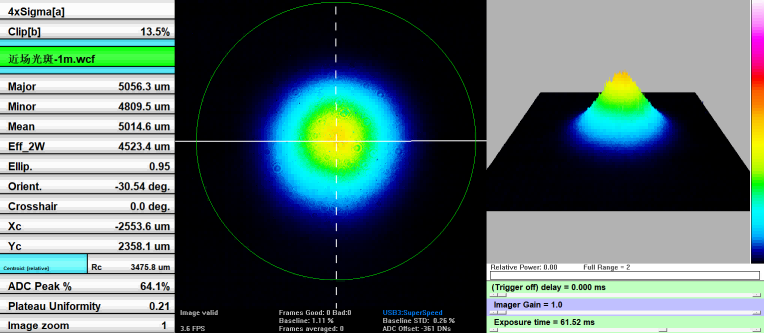
The near-field beam spot of the HELIOS-20W-HP (50kHz/400μJ)
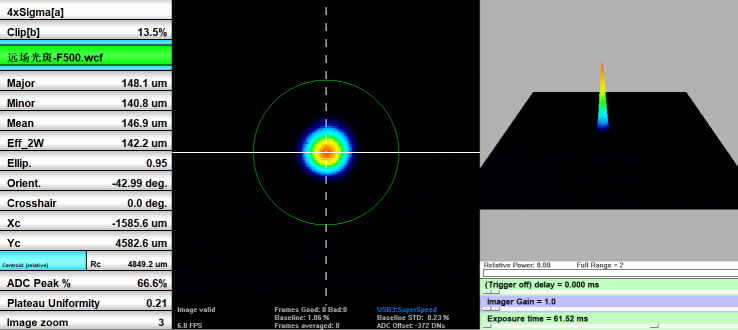
The far-field beam spot of the HELIOS-20W-HP (50kHz/400μJ)

HELIOS-20W-HP (50kHz/400μJ) spectral curve, central wavelength 1036nm
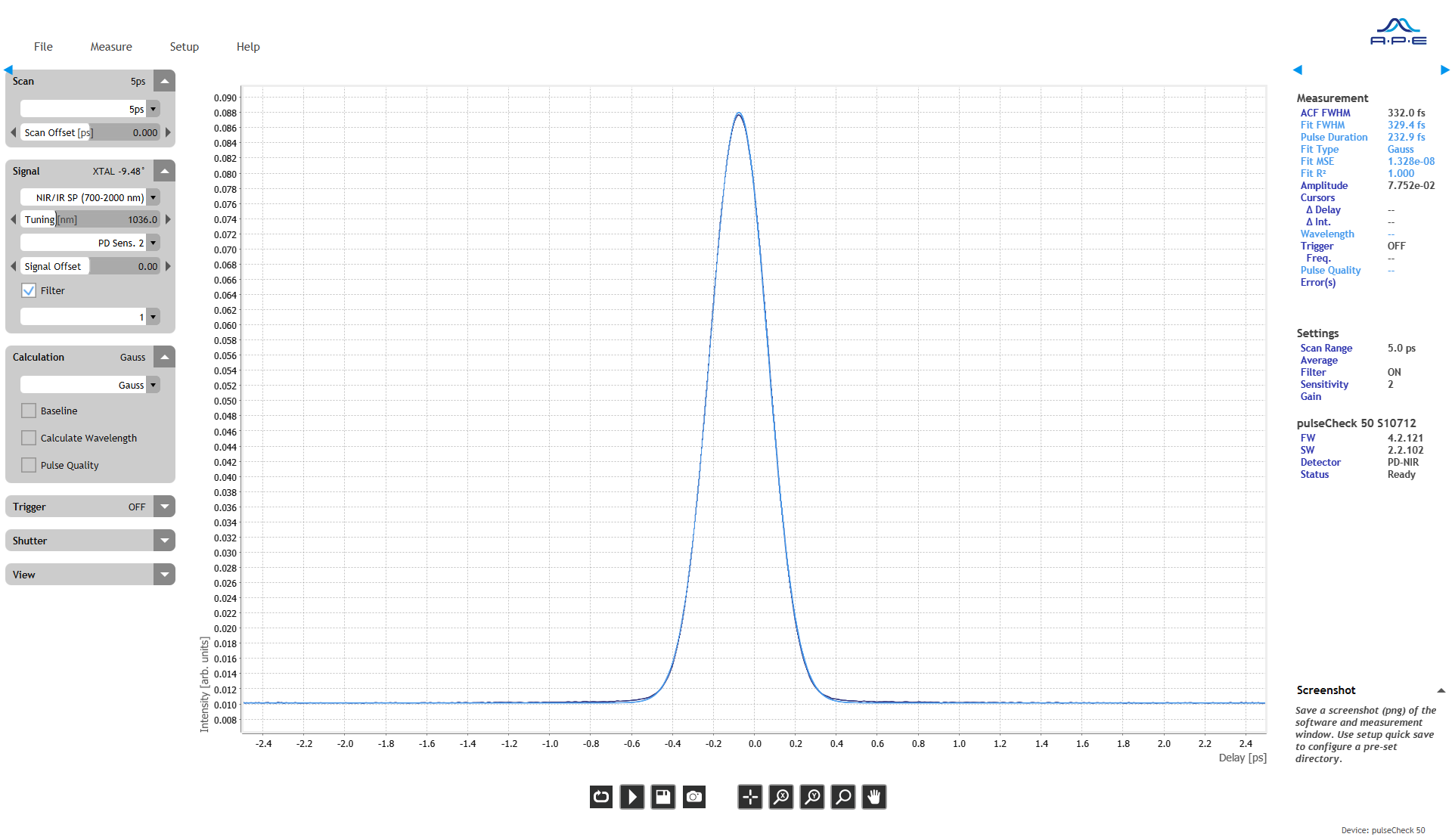
HELIOS-20W-HP (50kHz/400μJ) factory pulse width test, pulse width = 232.9 fs
After the laser is split into two beams by a beam splitter, one beam generates broadband probe light in the range of 450 nm to 1100 nm, while the other beam enters the optical parametric amplifier (OPA) to produce tunable pump light with a wavelength range of 630 nm to 2600 nm. This pump light is used to excite the sample. The wide wavelength coverage of both the pump and probe light ensures the system can meet the excitation and detection needs of diverse samples.

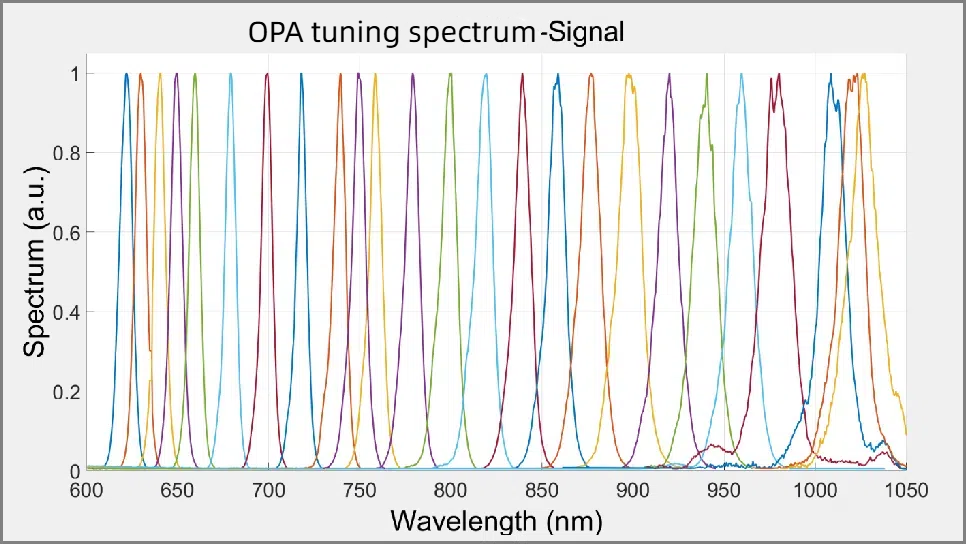
The output signal spectrum of the OPA (AURORA-HP) pumped by HELIOS-20W-HP (50kHz/400μJ).

The idler spectrum of the OPA (AURORA-HP) pumped by HELIOS-20W-HP (50kHz/400μJ)
|
|
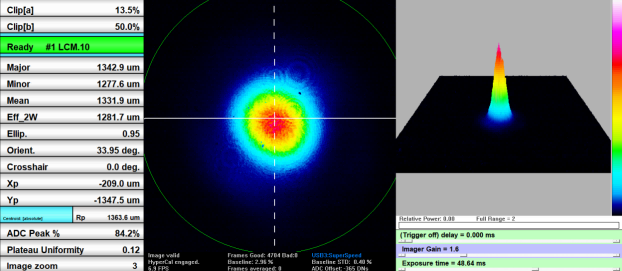
The output beam spot of the OPA pumped by HELIOS-20W-HP (50kHz/400μJ) - 50kHz,OPA output at 1m @ 800nm, wedge surface reflected beam spot, D1.3mm
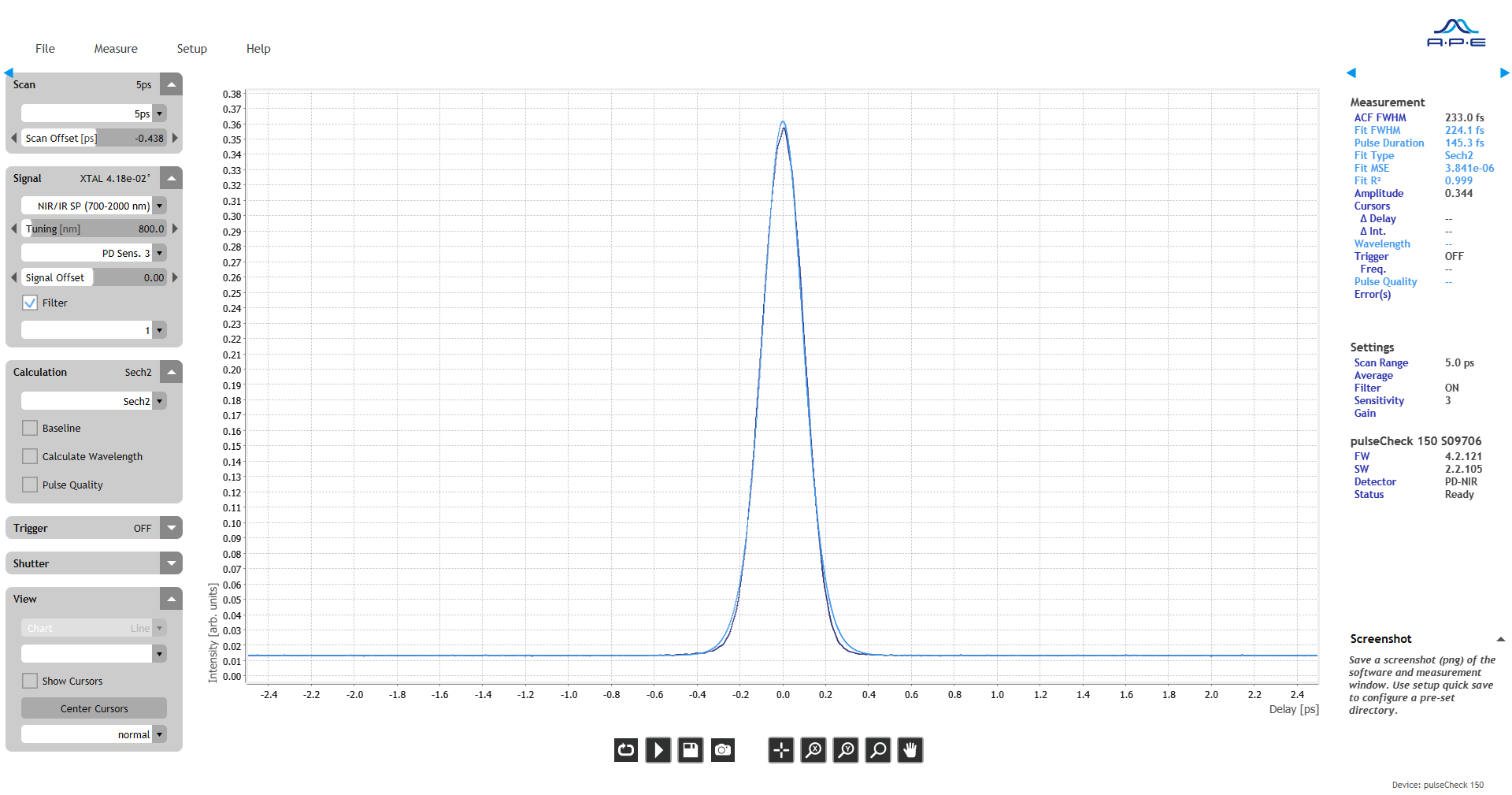
The output pulse width of the OPA pumped by HELIOS-20W-HP (50kHz/400μJ) @ 800nm - 145.3 fs.

The output power stability of the OPA pumped by HELIOS-20W-HP (50kHz/400μJ) @ 13.5h, RMS = 0.4990% @ 750nm
The HELIOS-20W-HP laser, combined with the optical parametric amplifier (OPA), offers an ultra-wide wavelength tuning range from 650 nm to 2600 nm, covering the UV, visible, near-infrared, and mid-infrared bands, meeting the needs of multidisciplinary research. The system provides high power output in key bands (700 nm - 950 nm and 1300 nm - 1900 nm), with peak signal power reaching 2200 mW and peak idler power reaching 1400 mW. It also delivers excellent power stability and pulse width, consistently providing time resolution on the order of hundreds of femtoseconds, ensuring reliable support for long-duration experiments.

 AI Assistant
AI Assistant

